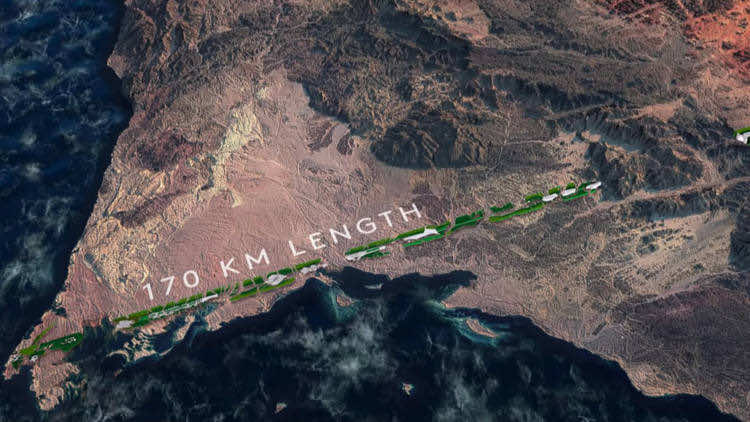The start of 2021 saw some new Covid-19 strains and new plans to develop a linear city called “The Line,” planned to stretch on 170 km straight land. Interestingly, roads in the new city would be replaced by underground hyper-commute development.
Announced by Saudi Arabia’s crown prince, the futuristic urban development will be focused on integrating a modern city with nature, blending in both for human convenience while making sure not to harm the environment.
While presenting his plans for the new city, the crown prince said it caters to the challenges like pollution, human congestion, traffic and replaces the outdated infrastructure planning for the first time. A plan that was much needed for years now, as humans know the harms that traditional and ongoing urban developments bring along to our beloved environment.
The Line will link the coast of the red sea with mountains and upper valleys of the northwest of Saudi Arabia. The smart and futuristic city will entirely be powered by clean and renewable energy with a development that brings zero to no harm to the environment.
“Why should we sacrifice nature for the sake of development? Why should seven million people die every year because of pollution? Why should we lose one million people every year due to traffic accidents? And why should we accept wasting years of our lives commuting?” the Crown Prince asked during his presentation of The Line.
“Therefore, we need to transform the concept of a conventional city into that of a futuristic one … Today, as the Chairman of the Board of Directors of NEOM, I present to you THE LINE. A city of a million residents with a length of 170 km that preserves 95 percent of nature within NEOM, with zero cars, zero streets, and zero carbon emissions.”
Along with being friendly to the environment, the new city’s plan comes with a catchy new transportation method. The underground speed hyper transportation system would allow its residents to travel from one end to another in under a span of 20 minutes. Moreover, all the necessities of life would be available to the people living in “The Line” under five minutes walking distance.
Projects for many of the new urban and clean cities are undergoing development. However, none matches the uniqueness of “The Line.” A city to stretch at a distance of 170 km’s in between the middle of nowhere, in a Saudi desert with the absence of cars sounds more than futuristic. The plan sure caters for all the concerns and problems that humans have linked with massive urban development, to provide a city that promotes healthy living in a clean environment, with zero pollution and zero net-emissions, aided by the underground hyper transportation system for swift travels from point A to B within the city.
Quite a far-fetched idea
Keeping The Line to its linear development would ask for some strict regulations. Why say so? Because humans tend to develop and expand the cities in all directions possible, limiting it to its initial development plan would bring along new challenges. Other than this, developing an underground hyper-fast commute system that makes possible a 20-minute journey from one end to another also sounds like a commitment that would take years to be fulfilled, given the kind of transportation technology humans have for now.
But once developed, it would allow its residents to enjoy a clean environment close to nature with all the comforts of modern living. All of it without polluting the earth furthermore is the new city’s motto.
“The history of so-called megaprojects is not pretty. Usually, they don’t quite turn out the way the original visionaries intend, they often fall prey to economic conditions or other people’s ideas of what should happen, or they wind up costing vastly more than expected,” Stephen Wheeler, a landscape architect and environmental design professor at the University of California, Davis, told Live Science.
Construction for “the line” would commence in the first quarter of 2021. However, experts are assuming its development would go on for quite some years in the future.

